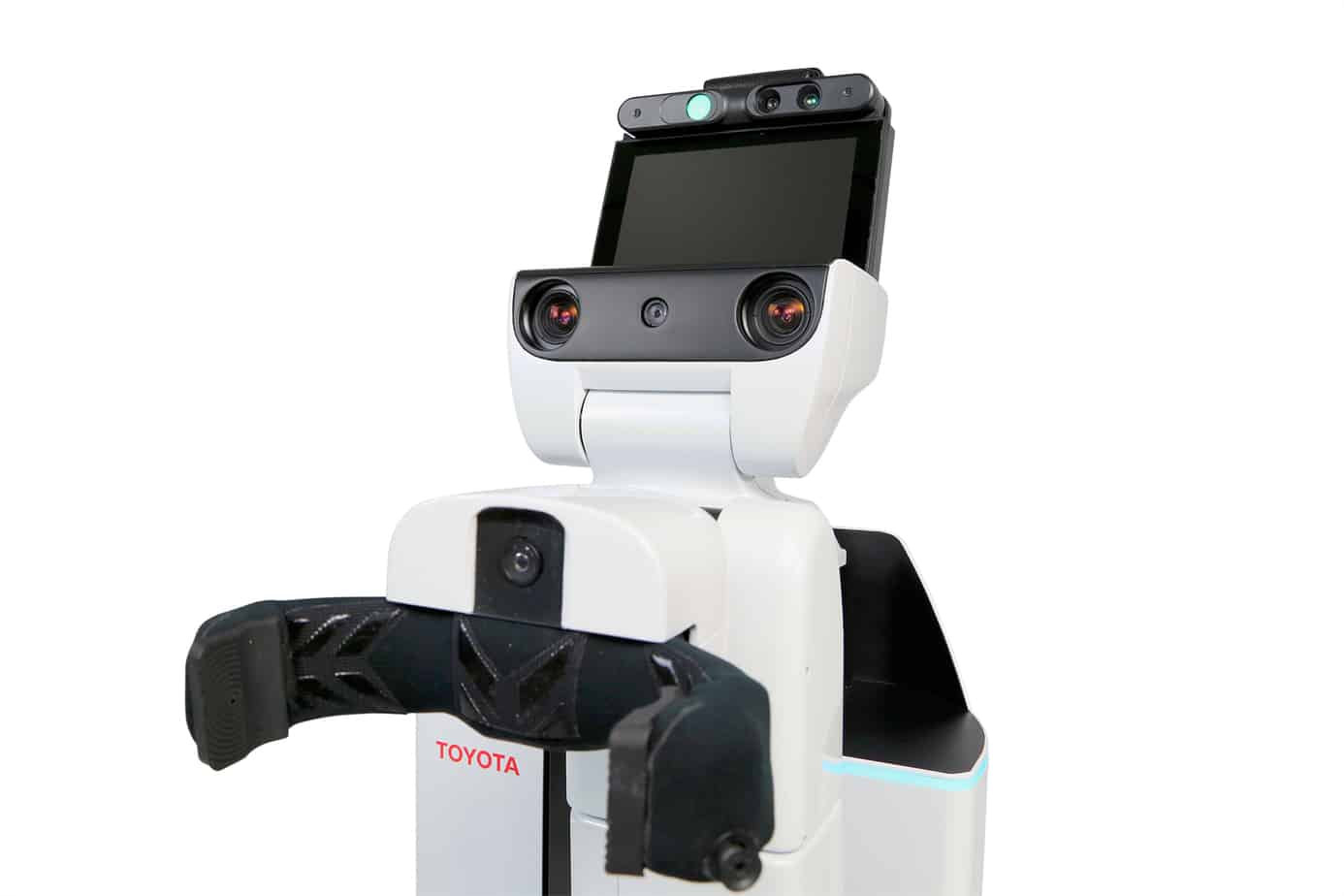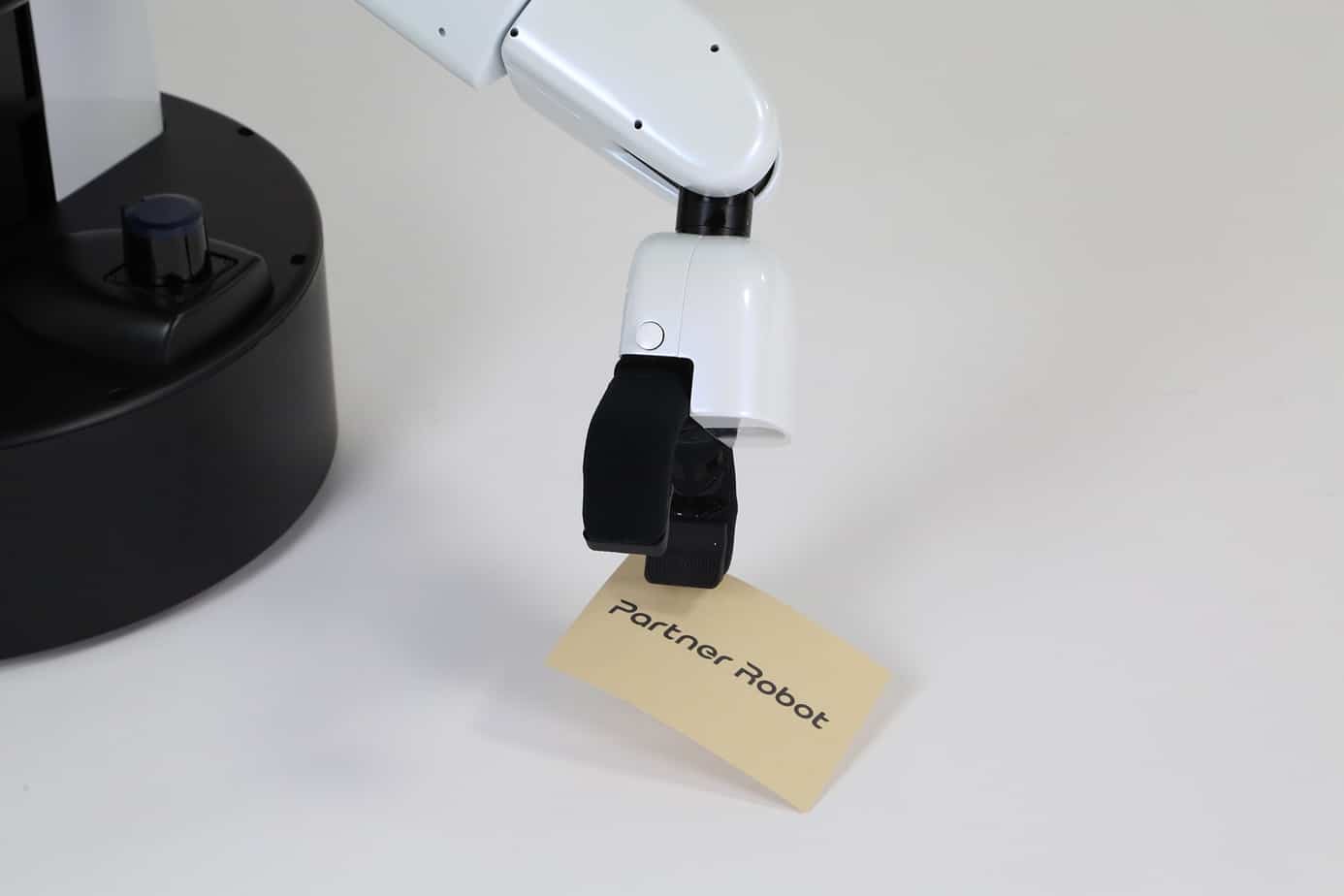

If you use a wheelchair and need help finding your seat or carrying a drink at the Tokyo 2020 Olympics and Paralympics, there’s a chance that you’ll have a robot assisting you. On March 15, the Tokyo games’ organizing committee announced that they’ll be deploying 16 of Toyota’s “Human Support Robots” at competition venues to provide assistance for wheelchair-using spectators while showcasing the technology’s potential for wider application in everyday life.
The HSR is designed to provide personal care assistance for everyday tasks, including picking up objects off floors, retrieving items, and opening doors or window blinds. To do this, the cylindrical base uses a retractable arm with finely calibrated pincers that can grab items like clothes or a small water bottle, while a suction cup can retrieve thin items like a piece of paper. With an integrated display, cameras and microphones, the HSR also provides remote video communication with family, friends or care providers. It can be controlled by the user via voice or tablet, or by a care provider remotely.

Development of the HSR was first announced in 2012 and is a reflection of Toyota’s mission to broaden itself from a traditional auto maker into a “mobility company” focused on movement in all its forms. Toyota has been refining and testing the HSR with disabled individuals and at elder-care centers, and the 2020 Olympics/Paralympics will be one of the first opportunities for the general public to use the technology.
“Toyota hopes to provide ‘the freedom to move for everyone’ throughout the Games and has developed various mobility solutions, including robots. We believe that the robots will help spectators in wheelchairs to enjoy watching the events without any restrictions, to soak up the atmosphere inside stadiums and to feel the excitement of sport,” said Nobuhiko Koga, Chief Officer of Frontier Research Center at Toyota, in a release.
In addition to the HSR, the Tokyo games will also use two other robotic systems: a delivery support robot by Toyota that will bring items to wheelchair-using spectators and an exoskeleton made by Panasonic that will give workers a power assist when carrying heavy loads. More robotic systems for use at the games may be announced later.
Many Japanese auto makers and technology companies — driven by Japan’s rapidly aging demographics and projected surge in demand for personal care assistance — are expanding to enter the mobility market. At Tokyo 2020, we might finally get a glimpse of whether robotic system have advanced enough to provide real world care-giving solutions.
Support New MobilityWait! Before you wander off to other parts of the internet, please consider supporting New Mobility. For more than three decades, New Mobility has published groundbreaking content for active wheelchair users. We share practical advice from wheelchair users across the country, review life-changing technology and demand equity in healthcare, travel and all facets of life. But none of this is cheap, easy or profitable. Your support helps us give wheelchair users the resources to build a fulfilling life. |


Recent Comments
Bill on LapStacker Relaunches Wheelchair Carrying System
Phillip Gossett on Functional Fitness: How To Make Your Transfers Easier
Kevin Hoy on TiLite Releases Its First Carbon Fiber Wheelchair